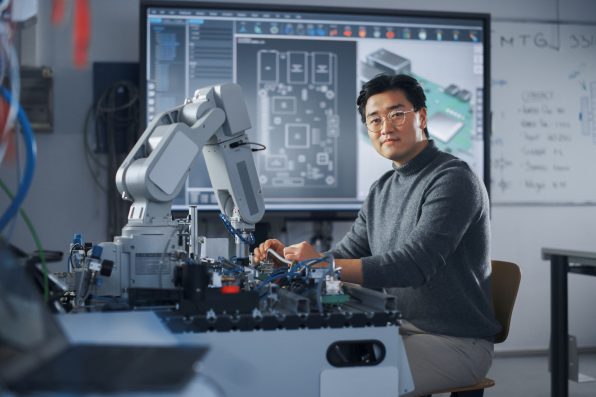Japanese Scientists Discovered A Way To Bind Living Skin Onto The Faces Of Robots, Making Them More Human-Like

Robots may be on the way to looking more human-like sooner than you think. Researchers in Japan have announced that they discovered a new way to bind living skin tissue onto the face of a mechanical robot.
The team of researchers was led by Shoji Takeuchi, a professor from the Institute of Industrial Science at the University of Tokyo. Previously, Takeuchi has also created three-dimensionally printed lab-grown meat and small robots that use biological muscle tissue to move.
In the latest experiment, the research team developed a flesh-like material using collagen, a fibrous protein in the human skin and other connective tissues, that can adhere to a robotic finger.
The finger can then bend without breaking, much like a human’s. They took the “living” skin and applied it to a robot with glassy, light-colored eyes and the ability to smile.
“During previous research on a finger-shaped robot covered in engineered skin tissue we grew in our lab, I felt the need for better adhesion between the robotic features and the subcutaneous structure of the skin,” Takeuchi said.
The team had been inspired by the natural structure of human skin ligaments. By using a special collagen gel that was applied to small V-shaped perforations on the robot’s surface, they were able to create a more malleable material that is better attached to surfaces.
In the past, small hooks and anchors were employed to attach skin tissue to solid surfaces. This can lead to the skin breaking or falling off. The new method offers a balance between rigid and soft, adhering to surfaces smoothly so that it doesn’t detach easily.
The findings from the latest experiment could be useful in research for cosmetics, skin aging, plastic surgery, other surgical procedures, and drug development. They could also lead to the creation of robots with improved sensory and self-healing abilities, as well as a more human-like appearance.
The researchers did identify some new challenges through this study. They noted that it is necessary to include surface wrinkles and a thicker epidermis to make the robot look more realistic.

Gorodenkoff – stock.adobe.com – illustrative purposes only, not the actual person
That’s why Takeuchi plans to explore how to create a vascular system for the next phase of research.
By incorporating a network of blood vessels, sweat glands, sebaceous glands, pores, fat, and nerves, the skin can retain health and moisture over time, extending its longevity.
Lifelike robots are particularly important, especially as humanoids begin moving into people-facing roles in areas such as healthcare, education, and customer service.
Their limited facial expressions and other missing human features can make people uncomfortable. Improving the realism of robots will make them less unsettling.
Overall, Takeuchi has been satisfied with the results of the experiment. With continued research, he hopes to contribute to the creation of humanoids that will look and feel like people in the future.
Sign up for Chip Chick’s newsletter and get stories like this delivered to your inbox.
More About:News





